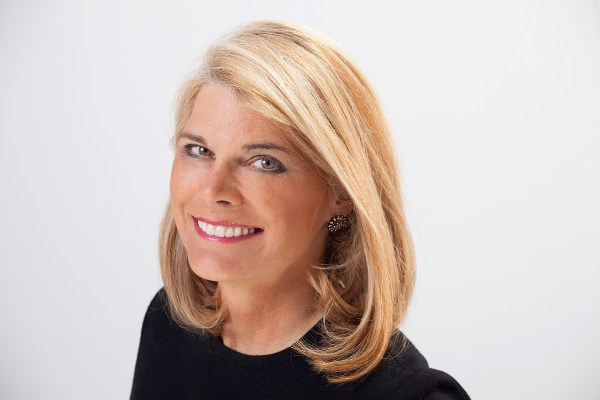The rise of streaming video platforms like Netflix and Amazon Prime has upended traditional power balances in Hollywood and is reorganizing the way we consume films and TV series as consumers.
Following her talk at the recent Banff World Media Festival in Canada, I interviewed Laura Martin, the senior analyst covering entertainment and internet stocks at leading investment bank Needham & Company, to sort out how the pieces are moving in this chess game between content creators, streaming services, consumers, and government regulators.
We discuss why Netflix is still at risk of a downfall, the effect of EU content quotas, why Martin thinks regulators should break up Google, and why video streaming and game streaming are likely to merge into the same subscription products.
Here is the transcript of our discussion, edited for length and clarity:
Eric Peckham: There’s an optimistic case that the rise of online video streaming is a win for both consumers and content creators because it creates a vast landscape of content platforms. Onstage in Banff, you argued that the number of content platforms (and thus the number of content buyers) will in fact shrink. Why do you see it going that direction?
Laura Martin: There are 4,000 video apps on the Roku platform today (and similarly on Samsung and on Amazon Fire). What you’ll see is a consolidation in the industry as we get big players like the Walt Disney Company, AT&T, and Apple coming into the DTC business with big, deep pockets. Although we have more buyers of content today, it’s driving prices up.
It is likely that the big players are just battling out between themselves, putting smaller players out of business. Over a 10-year time frame, I expect just three or four winners, and that will bring more discipline back into the financial aspects of the business.
Peckham: What will separate the winners from the losers here?
Martin: Most of the new entrants into the video space do not need to make money in video, so they can overspend on content because it’s subsidized by a sister subsidiary like phones or e-commerce or social or search.
Peckham: How long is the window they can run at a loss here — overspending on content to secure market share — before investors become much more critical? Whether we’re talking about Apple or Amazon or Disney (because it has the theme parks). Or can they can always operate at a loss and count it as a marketing cost for their other product lines?
Martin: It’s a bigger problem if you are a pure content play like Netflix where your valuation is predicated on a single asset. It’s also a big problem for those 4,000 apps that are sitting on Roku. Whatever profits they were making are under downward pressure because somebody will soon be able to spend seven dollars and buy the Walt Disney Company’s subscription service.
To companies like Apple or Amazon with $800 billion market caps, these content losses are tiny. Let’s assume for a minute that they all spent as much money as Netflix will spend this year ($13 billion). A $3 billion loss in a company as large as Disney or Apple or Amazon is just too small to threaten the overall business. They can do that for 10 years.
Peckham: For those on the creative side of the business — the producers, production companies, etc — is this good for them? Even though we’re talking about whittling down to fewer buyers long term, if they’re continuing to compete, and they’re willing to operate a loss, will they just keep paying more than they otherwise would for content?
Martin: Yes. This is all good for content creators. And for library values too.
Peckham: How much will this consolidation over the next 10 years happen via M&A, acquiring the smaller players, versus the smaller players going out of business?
Martin: If you have library assets, like a lot of the 4,000 apps on Roku have some good content, somebody will buy them or that content from them to create their own larger library.
Peckham: One of the concerns I hear from people is that a smaller number of dominant platforms, mainly American platforms, will create a homogeneity of the type of content available worldwide. Everyone will just have the same American shows. But these streaming platforms are incentivized to create more multicultural content because their priority is acquiring new subscribers in foreign markets who will want localized shows, no?
Martin: That’s true. They start with mass content but after they get all the subscribers that content appeals to, they must collect niche audiences to grab the next subscriber. They must target new niche groups of subscribers and market content to that segment.
Peckham: If you live in France and it’s important to you that you have lots of content that’s French content, but Netflix and Amazon are driving local competitors out of business, will those people have the same amount of localized content they do now?
Martin: I think this is the role of government. France is very protective of its content industries, and so it requires Netflix to spend a certain amount of money in the local market on content.
Peckham: The new EU content quota is that 30% of their catalogs must be content from within the EU.
Martin: It’s not American, but other governments can force the big companies to spend money on local content.
Peckham: The main critique of content quotas is that the Netflixs of the world will just buy the cheapest or lowest quality local content just to hit those quotas. Do you see that as accurate, or ultimately, they’re still competing for those audiences?
Martin: They will want to create the content that helps them best win new subscribers. The benefit of an EU-level quota instead of country-by-country quotas is that they can invest more money on the content with the highest TV acceptance.
For example, in 2018 each French and German citizen watched an average of about 220 minutes (3 ½ hours) of TV every day, while Italians watched about 250 minutes (4 hours) each day of TV, according to WorldAtlas. Therefore, Netflix might decide to focus on Italian language content to meet the EU quota, even though Italy’s population is only 60 million, which is smaller than France at 67 million and Germany at 83 million.
Peckham: In terms of regulation, it seems growing privacy regulations are essentially just entrenching the dominant platforms even more because the burden of compliance…
Martin: Many of the rules coming out of the EU only apply to companies that are large, implying they’re trying to save smaller companies from this burden. But when you put these artificial definitions of what is small size versus big size, you create market anomalies.
For example having regulations that only apply to companies over $100 million in revenue forces consolidation because as a company approaches that revenue number where you’re going to have to add the cost of many lawyers, your investors encourage you to sell to a larger company that already pays for all those lawyers. Whereas if you stay independent and bulk up with a big compliance team, you lower your free cash flow (which makes you less valuable if you try to sell yourself later).
Peckham: Do you see a meaningful threat in the calls from some politicians to break up some of these companies?
Martin: I do think the odds are high that there will be pressure to break up at last some of Apple, Facebook, Google and Amazon. Not other companies. We are positive on the shareholder implications of breaking up Google.
Peckham: Tell me more about that.
Martin: Google has widely disparate businesses. If they broke them up, we believe Google would be valued at a 50% premium compared to its current conglomerate valuation.
A break-up of Google would create value for shareholders in our view because:
- Investors generally pay more for pure-play assets because they can balance their exposure to risk by business line;
- There would be more disclosure about each business, because more data points would meet the SEC’s “materiality” threshold;
- Employee retention would improve because employees would receive stock in a company they could impact; and
- There would be more accountability for leadership of each business. We believe that YouTube on a stand-alone basis would be valued at over $200B, about 30% above where it is being valued inside the Google conglomerate today.
Peckham: Doesn’t antitrust action undermine the advantage of their streaming platforms to subsidize their content spend with other products?
Martin: If they break these companies up, they’ll most likely break them into two or three parts and each part would still be valued at over a $100 billion market capitalization.
Peckham: Do you count Disney equally alongside Apple, Amazon, etc. here in being able to subsidize content with theme parks and merchandise?
Martin: Sure I do. Now, Disney’s core competence is content so it has to win in content, but it has subsidies from its other businesses. For example, if it’s making new over-the-top content, it can also put it on ABC (which Disney owns) in a different time frame, which helps the IRR of investing in content. It has many ways to monetize the same piece of content beyond just the streaming service.
Peckham: The last topic I’d love to touch on here is esports, gaming, and interactive media (like Netflix’s choose-your-own-adventure shows). How much is this interactive content going to merge into the same platforms? As in, Netflix trying to be a gaming platform too.
Martin: I think they’re converging. You want to be in both spaces because what you don’t want is, say, you’re Netflix and you only do video, but then Amazon does both video and video games. Once somebody else offers a bundled product, consumers are going to stay there longer.
Peckham: You have said Netflix may not be large enough to survive, given it doesn’t have any sister companies subsidizing its OTT business. Is a move into a cloud gaming platform inevitable because of that?
Martin: I don’t know if it’s inevitable, but I think it’s a good strategic move.
Peckham: In terms of the competition from companies that can subsidize content spend, when does Netflix start to buckle? At a certain point, it must run into a limit on the debt it can raise to just keep spending more on the promise of being profitable in the future.
Martin: What will break Netflix is net subscriber losses. It’s the revenue line and subscriber growth that determines its valuation at 10 times revenue. How much free cash flow they lose is secondary. Normal multiples of growth companies are six times revenue, so if Netflix starts losing subscribers, its valuation multiple could fall from 10x to 6x revenue, which would be bad for Netflix.
(Note: After this interview, Netflix reported a net loss in US subscribers as part of its Q2 earnings report due to a price increase. Its market cap dropped 15% to $307/share in the days after, the stock price has gradually risen back to $335/share (it traded at $362 before). This is partly due to recognition that Q2 ended just days before the third season of the hit show Stranger Things was released, which drove a surge of new subscribers.)




